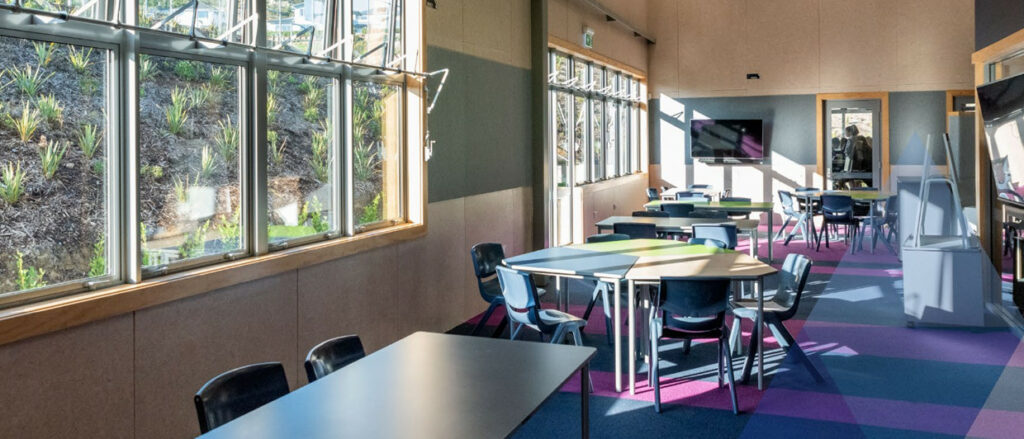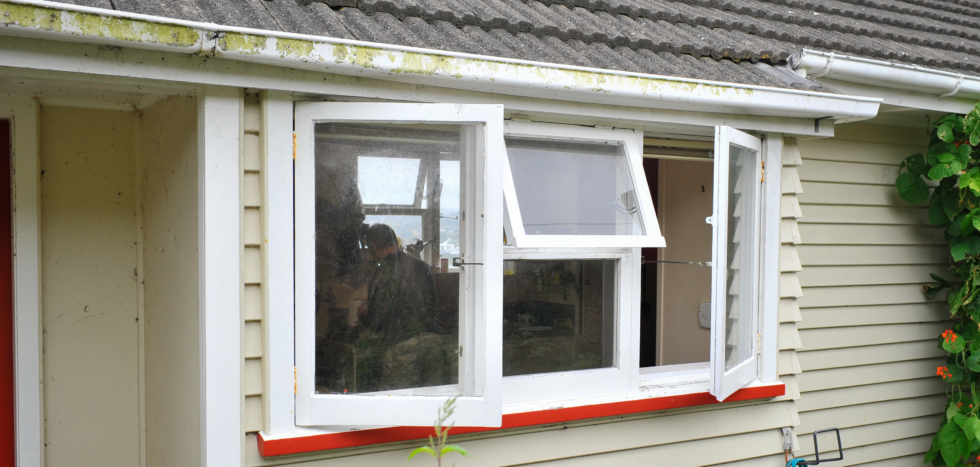20 November 2023
Healthy indoor air is a fundamental necessity and poor indoor air quality is responsible for both economic costs and loss of life. New Zealand studies have indicated the presence of pollutants in homes. Preliminary findings from an ongoing study shows that indoor personal exposure of some chemicals appears high.
1 October 2023
This is the first study to investigate the field performance of a roof-mounted solar air heater in NZ primary schools. Results of this study provide insights for the use of solar energy without need for energy storage to heat and ventilate the classrooms.

30 November 2022
Over the last 12 months, the New Zealand Ministry of Education’s COVID-19 ventilation programme, in collaboration with its advisory group of ventilation experts, have carried out a series of targeted studies which enhanced the understanding of the role of natural ventilation and informed our ventilation guidance to schools.

28 November 2022
Ventilation behaviour in Aotearoa New Zealand (NZ) is an under-researched area, despite the benefits that ventilation may have on occupant respiratory health. Most NZ homes rely on natural ventilation, i.e. window opening, which in turn relies on occupants to control ventilation. To understand how and to what extent people ventilate their homes, and ways in which ventilation can be improved, we will carry out a three-stage project.

18 October 2022
Improving ventilation in indoor spaces is a key strategy to prevent Covid-19 transmission, but it is unclear whether extensive messaging about this is changing behaviour or reducing transmission. Funded by the Ministry of Health, NIWA air quality researchers are carrying out research to understand ventilation behaviour and examine how well spaces used by our most vulnerable populations are, and could be, ventilated.

15 January 2022
Associations between house characteristics and inspector-assessed subjective indoor dampness (yes/no) and measured floor and ceiling joist timber moisture were measured, using the 2005, 2010 and 2015 New Zealand House Condition Surveys, involving 1572 timber-framed houses. We conducted logistic (dampness) and linear regression (moisture) for each survey separately and mutually adjusted for other house characteristics (ventilation, insulation, subfloor defects, building envelope condition (BEC) defects, tenure, number of occupants), climate zone (latitude), rainfall and outdoor temperature.
6 April 2021
This paper assesses the contribution of heating and household factors to indoor NO2 in almost 350 homes and reports on the reduction in NO2 levels due to heater replacement.
1 April 2021
ODINs (Outdoor Dust Information Node) are devices designed and built at NIWA that are designed to be deployed in grids of 25 to 100 units across a town. Each unit measures particulate matter levels (PM10 and PM2.5) every 10 minutes or faster, sending data to the cloud via the mobile phone network.
3 March 2021
Ventilation plays a major role in indoor air quality and moisture management in houses, lowering humidity levels and diluting and removing contaminants that impact on health and productivity. Research suggests, however, that houses are not being effectively ventilated. There are steps that both designers and home occupiers need to take to ensure healthier air in our homes.

1 June 2020
The identification of indoor air pollutants is useful for exposure analysis and air quality management as we spend 80-90% of our time in built environments. We present the results from a study of indoor aerosol composition across a range of residential housing stock in Wellington, New Zealand.
18 March 2020
This study investigates the thermal efficiency of a solar air heater (SAH), when it was mounted on a custom-made support frame, and was operated under different air mass flow rate.
1 December 2019
Bushfires, prescribed burns and residential wood burning are a significant source of fine particles affecting the health and well-being of many communities. Despite the lack of evidence, homes are perceived as a critical frontline of defence against episodic outdoor air pollution from smoke emissions.
1 October 2019
The indoor air quality of seven homes in the Wellington region was monitored over May-September 2017.
1 October 2019
Using commercial equipment to test the air quality in every New Zealand classroom would be prohibitively expensive. This project developed a low-cost sensor platform with remote logging and data transmission and tested it in 11 schools.

1 October 2019
A study of the air quality in a Wellington primary school classroom measured temperature, humidity, carbon dioxide (CO2), nitrogen dioxide (NO2) and particulates. Elements in the particulates were also identified to find the source of the pollution.
16 September 2019
2019 Clean Air Society of Australia and New Zealand conference proceedings.

1 March 2019
Children are particularly vulnerable to the health effects of air pollution and as they spend a large proportion of time at school, this is an important environment for children’s exposure to air pollution. Understanding the factors that influence indoor air quality in schools is critical for the assessment and control of indoor air pollution.
12 April 2018
A low-cost, low power consumption indoor environment monitoring device, called SKOMOBO (SKOol Monitoring Box), was developed. SKOMOBO includes the sensors to monitor temperature/relative humidity, carbon dioxide, particulate matter (PM) and motion (PIR). SKOMOBO was developed using the open source software on Arduino Pro Mini.
15 May 2017
The purpose of this study was to determine the environmental impacts associated with a deep energy efficiency refurbishment using life cycle assessment. A prototypical refurbished model of an office building located in Auckland, New Zealand was used as a case study. The refurbishment included major changes to the building envelope with additional insulation, modified wall-window ratio, solar shading as well as technical replacement of the lighting and HVAC system.
1 January 2017
A literature review of healthy homes and schools with emphasis on the issues pertinent to New Zealand.
7 September 2013
2013 Clean Air Society of Australia and New Zealand conference proceedings.
1 August 2011
There is growing evidence that asthma symptoms can be aggravated or events triggered by exposure to indoor nitrogen dioxide (NO2) emitted from unflued gas heating.
